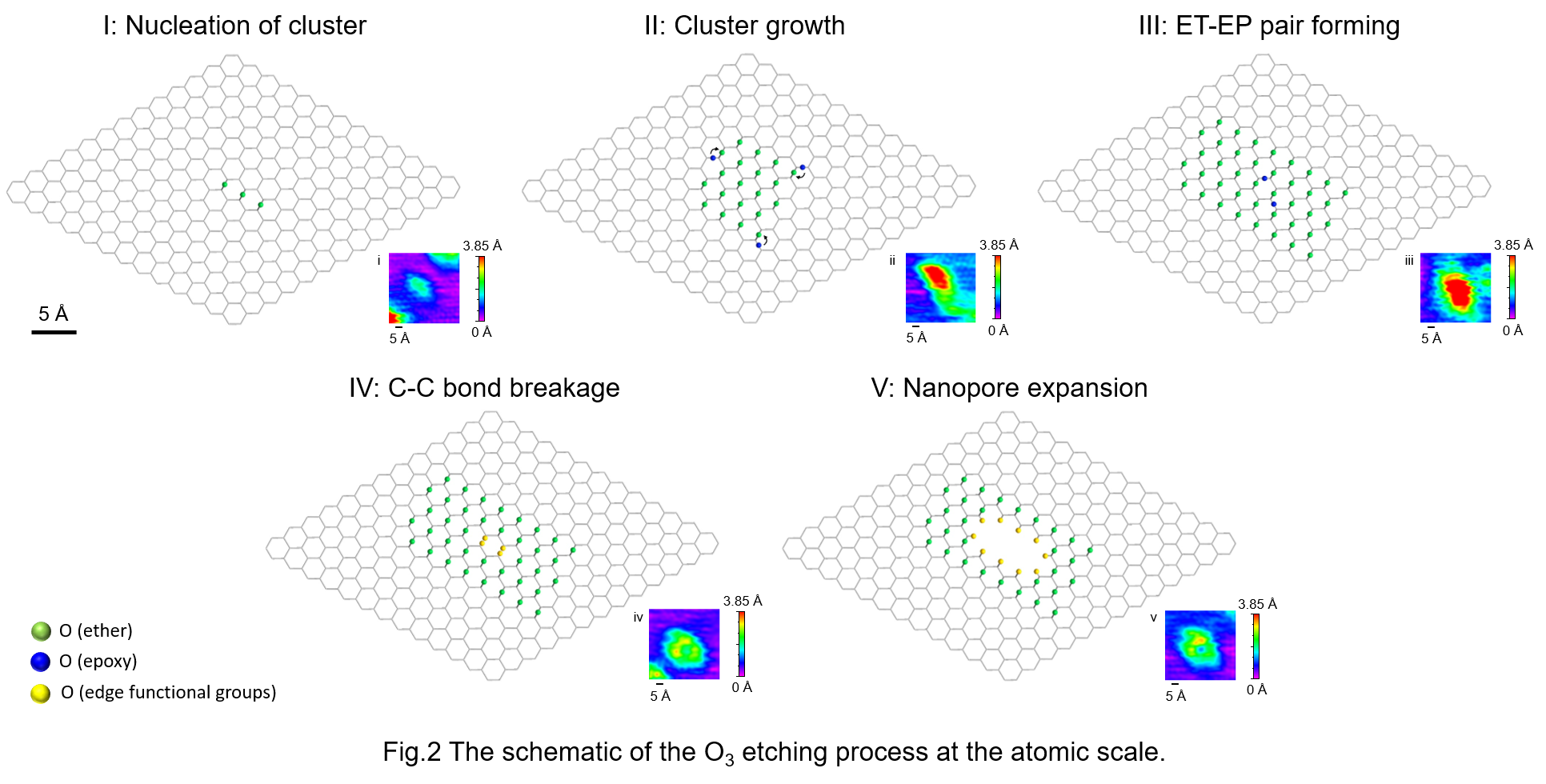A mechanistic study of ozone-led gasification on graphite by scanning tunneling microscopy
Nanoporous graphene has been widely studied for various applications, such as gas sieving membranes, batteries, and sensors. Ozone (O3)-induced graphene lattice gasification is a promising method to prepare nanoporous graphene with high-density nanopores up to 1013 cm-2 theoretically.[1] For enhancing this method to produce nanoporous graphene, it is crucial to understand the etching process and etching mechanism at the lattice scale.

In this study, for the first time, we observed the formation of oxygen clusters during the exposure of ozone to graphite by utilizing a low-temperature scanning tunneling microscope (LTSTM). We could resolve several different representative nanostructures on graphite, as indicated by five different colored arrows in Fig. 1, which corresponding to the five key etching stages. The observation and structure analysis revealed the etching process at atomic scale included nucleation of the cluster, cluster growth, ether-epoxy pair forming, C-C bond breakage, and nanopore expansion. The schematic of these five etching stages is shown in Fig. 2. This finding is the first experimental evidence to prove the simulation results[2] of the graphene oxidation process.

[1] De-en Jiang, Valentino R. Cooper, Sheng Dai, Nano Letters, 2009, 9, 4019-4024.
[2] Tao Sun, Stefano Fabris, Nano Letters, 2012, 12, 17-21.